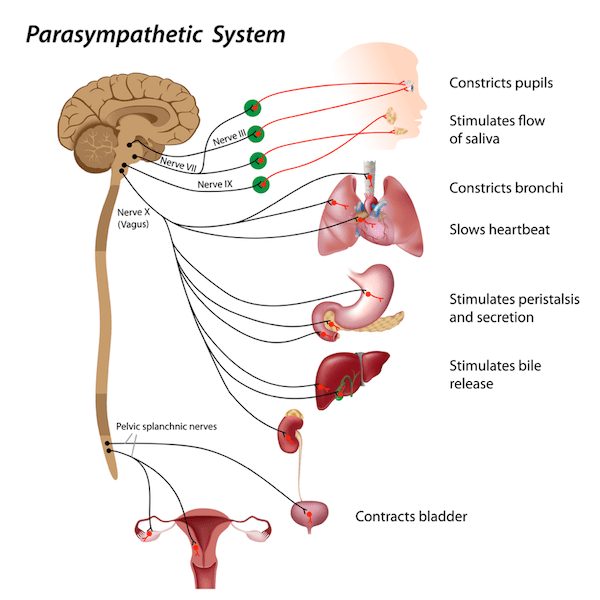The parasympathetic nervous system (PNS) is one of the two divisions of the autonomic nervous system, which controls all the body’s automatic functions. In this article, we will explore the structure, location, and activities of the parasympathetic nervous system. We’ll also hear from experts in the field, and learn about some exercises and breathing techniques that can help activate this vital system!
Contents
Understanding Parasympathetic Nervous System
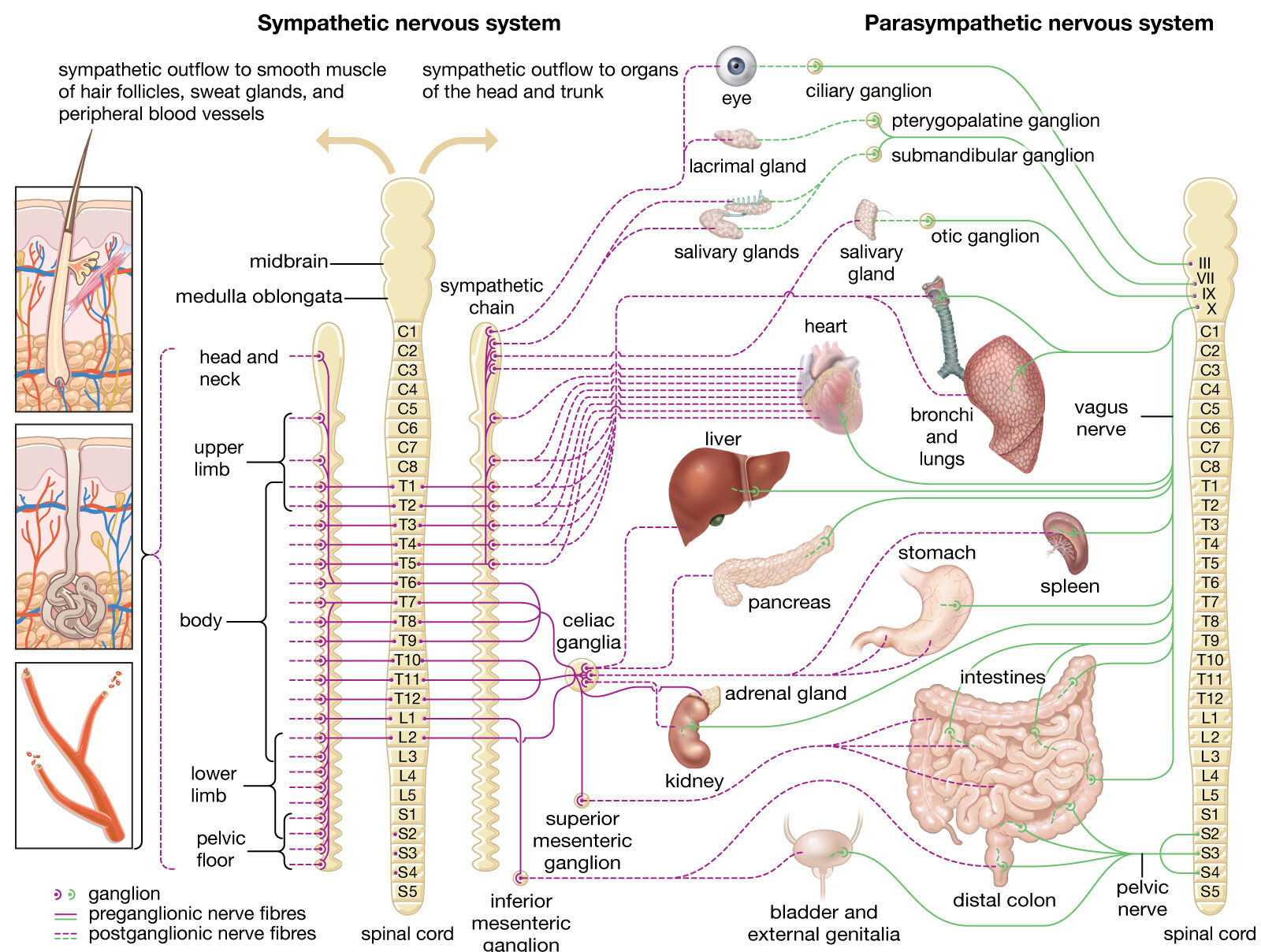
Brush Up The Basics
The nervous system is a network of cells that send and receive signals from the body. It is made up of two parts: the central nervous system (CNS) and the peripheral nervous system (PNS).
- The CNS is consist of the brain and spinal cord.
- The PNS is consist of nerves that connect the CNS to the rest of the body.
The nervous system can be further divided into the sympathetic and PNS.
- The sympathetic nervous system is responsible for the “fight-or-flight” response. This is the body’s way of preparing to deal with a threat or danger.
- The PNS is responsible for the “rest and digest” response. This is the body’s way of relaxing and restoring energy.
In this manner, the two systems work together to keep the body in balance.
Parasympathetic Nervous System
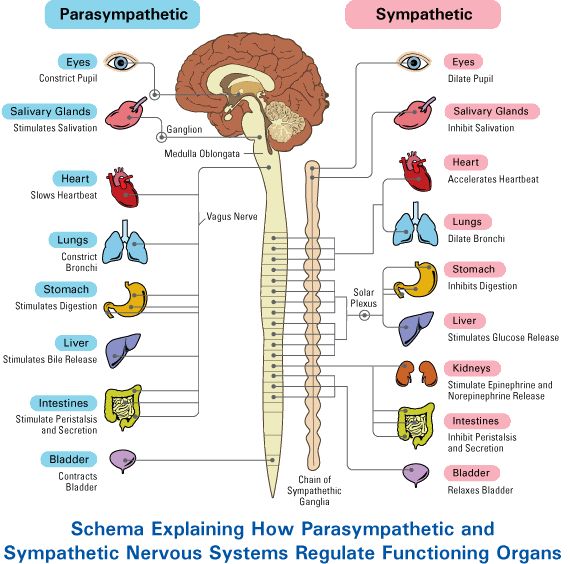
The PNS is one of the two divisions of the autonomic nervous system. The autonomic nervous system controls all the body’s automatic functions. Such as heart rate, digestion, and breathing.
The PNS is responsible for activities that we do every day without thinking about them. Such as blinking and swallowing. It’s also responsible for slowing down the heart rate and constricting blood vessels. The PNS comes into activation when the body is at rest. It helps to restore energy and promote a sense of calm.
Structure of Parasympathetic Nervous System
The PNS is made up of two parts: the central nervous system and the autonomic nervous system.
- The autonomic nervous system is divided into the sympathetic and parasympathetic systems.
- The parasympathetic system is further divided into cranial and spinal divisions.
- The cranial division includes nerves that originate in the brain.
- The spinal division includes nerves that originate in the spinal cord.
Location of Parasympathetic Nervous System
The PNS is located in the autonomic nervous system. This part of the nervous system controls all of the involuntary activities in the body, such as heart rate and digestion.
The autonomic nervous system is divided into two parts: the sympathetic and parasympathetic systems.
- The sympathetic system controls the “fight or flight” response,
- While the parasympathetic system controls the “rest and digest” response.
The PNS is located near the spinal cord in the neck and upper chest area. It extends down to the pelvis and reproductive organs.
Activities Parasympathetic Nervous System Regulates
The parasympathetic nervous system is responsible for the body’s “rest and digest” response. This is the body’s way of relaxing and restoring energy. When the body is in a state of rest, the PNS activates. This causes the heart rate to slow down and blood pressure to drop. It also causes the digestive system to work more efficiently and the bladder to empty. Thus, the PNS is responsible for several activities, including:
- Sexual arousal
- Controlling urination
- Blinking and swallowing
- Regulating the body’s heart rate
- Regulating the body’s temperature
- Stimulating the production of saliva
- Controlling the body’s blood pressure
- Stimulating the production of digestive juices
Activating Parasympathetic Nervous System
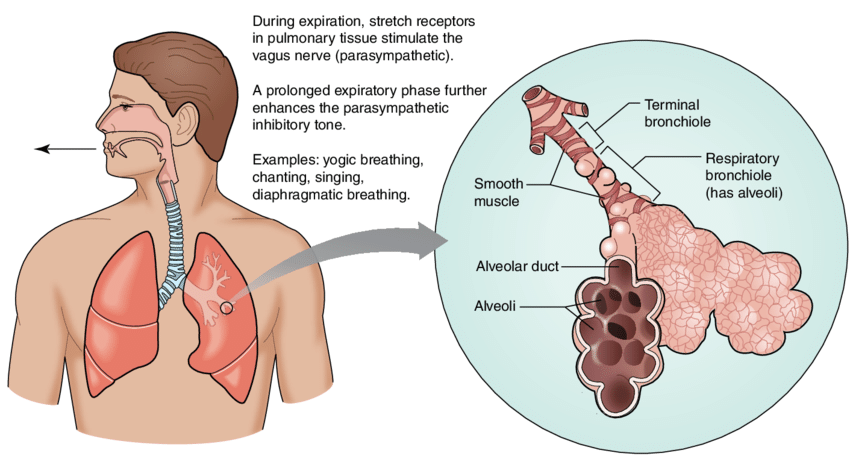
There are a number of ways to activate the PNS. One way is through breathing exercises. Another is by doing relaxation exercises, such as yoga or meditation. You can also activate the PNS by listening to calming music or sounds, or by spending time in nature.
Exercises
Exercise is a great way to activate the PNS. It helps to reduce stress and promote relaxation. The following exercises are a great way to start:
- Slow Down – When we feel stress, our body goes into “fight or flight” mode. This can cause the heart rate to speed up and blood pressure to rise. One way to activate the parasympathetic nervous system is to slow down. This can be done by taking deep breaths, focusing on your breath, and spending time in nature.
- Stretch – Stretching is another great way to activate the parasympathetic nervous system. It helps improve blood circulation, releases tension in the muscles, and reduces stress.
- Meditate – Meditation is a way to focus on the present moment and relax the mind. It’s a great way to activate the parasympathetic nervous system and can be done anywhere, anytime.
- Yoga – Yoga is a great way to activate the parasympathetic nervous system, as it combines stretching and breathing exercises.
Breathing Techniques
Breathing techniques are a great way to activate the PNS. They help calm the mind and body. The following breathing exercises are a great way to start:
The Four-count Breath – This breath is a great way to relax the body and calm the mind. You can do anytime, anywhere!
- To do the four-count breath, inhale for four counts, hold for four counts, and exhale for four counts.
The Alternate-nostril Breath – This breath is a great way to energize the body and calm the mind. You can do it anytime, anywhere!
- To do the alternate-nostril breath, close your right nostril with your thumb and inhale through your left nostril.
- Then, close your left nostril with your ring finger and exhale through your right nostril.
- Inhale through your right nostril, then close it with your thumb and exhale through your left nostril.
- Repeat the sequence for a few minutes.
Hearing From Experts
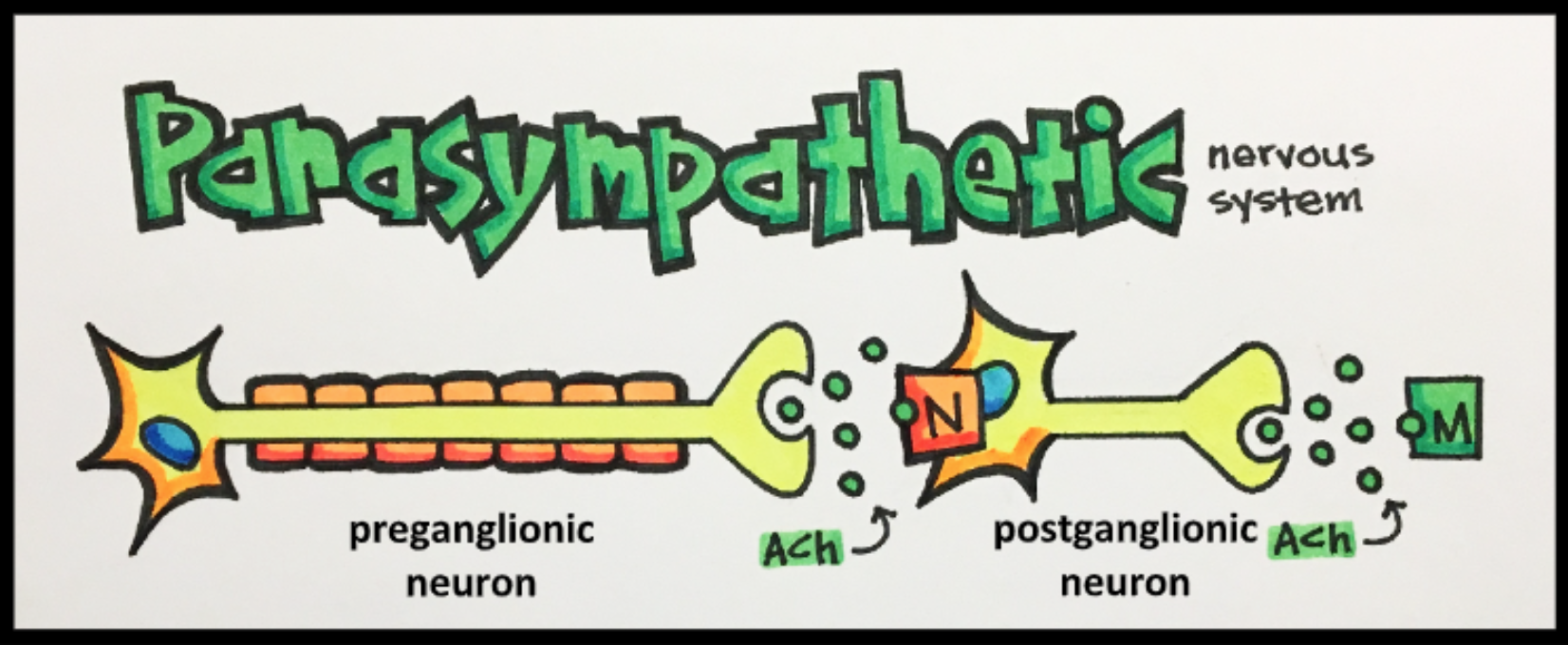
There is a lot of information available on the internet about the PNS. But sometimes it can be helpful to hear from experts in the field. Here are some quotes from professionals who have written about or studied the PNS.
“The activity of the autonomic nervous system is largely regulated by the hypothalamus, a small area of the brain that is responsible for releasing neurochemical messengers called neurotransmitters. The parasympathetic nervous system is activated by the release of acetylcholine from preganglionic nerve terminals.”
– From “The Autonomic Nervous System: An Overview” by Gregory D. Cote and Joseph E. Murray
Brain Activity When PNS Activates
There is some evidence that suggests that different areas of the brain are activated when the PNS is activated. For example, a study published in PLoS One found that the PNS was associated with increased activity in the medial prefrontal cortex (mPFC) and decreased activity in the amygdala. The mPFC is involved in self-referential processing and emotion regulation, while the amygdala is involved in fear and anxiety.
Case Study
In this section, we will explore a case study of a patient with PNS dysfunction.
Ms. Jones is a 55-year-old woman who has been struggling with chronic fatigue and digestive problems for the past few years. Her doctors have been unable to diagnose her condition, and they are not sure what is causing her symptoms.
Ms. Jones recently began seeing a chiropractor who specializes in working with the parasympathetic nervous system. After a few sessions, the chiropractor was able to diagnose her condition as parasympathetic nervous system dysfunction.
The chiropractor recommended several exercises and breathing techniques that Ms. Jones can do at home to help activate her parasympathetic nervous system. She also recommends that Ms. Jones see an acupuncturist who specializes in working with the parasympathetic nervous system.
Resources
To learn more about the PNS, we recommend the following resources:
- The Parasympathetic Nervous System: A Review of Its Structure and Function by J.M. Brook
- The Parasympathetic Nervous System: Anatomy and Physiology by C.L.N Wood
- Anatomy & Physiology for Nurses: The Autonomic Nervous System by M.J. Schoen
- If you are looking for a chiropractor who specializes in working with the parasympathetic nervous system, you can find a list of practitioners on the website of the American Chiropractic Association.
- If you are looking for an acupuncturist who specializes in working with the parasympathetic nervous system, you can find a list of practitioners on the website of the National Acupuncture Detoxification Association.
Conclusion
The PNS is responsible for the body’s “rest and digest” response. This is the body’s way of relaxing and restoring energy. Furthermore, there are several ways to activate the parasympathetic nervous system. For instance, exercise, breathing techniques, and relaxation activities are all effective ways to stimulate the system. Resources are available online to help learn more about the PNS.
A Word From Therapy Mantra
Your mental health — Your psychological, emotional, and social well-being — has an impact on every aspect of your life. Positive mental health essentially allows you to effectively deal with life’s everyday challenges.
At TherapyMantra, we have a team of therapists who provide affordable online therapy to assist you with issues such as depression, anxiety, stress, workplace Issues, addiction, relationship, OCD, LGBTQ, and PTSD. You can book a free therapy or download our free Android or iOS app.
